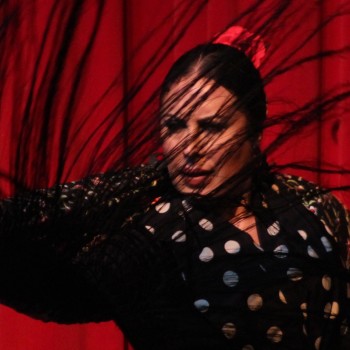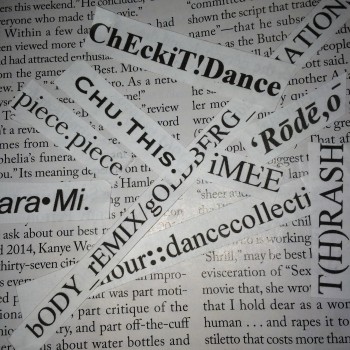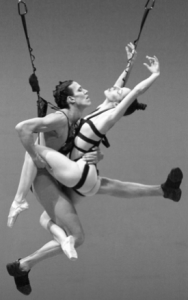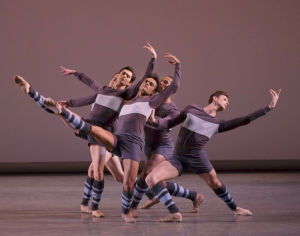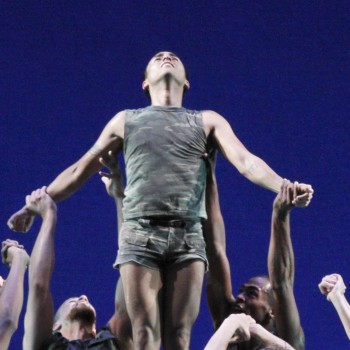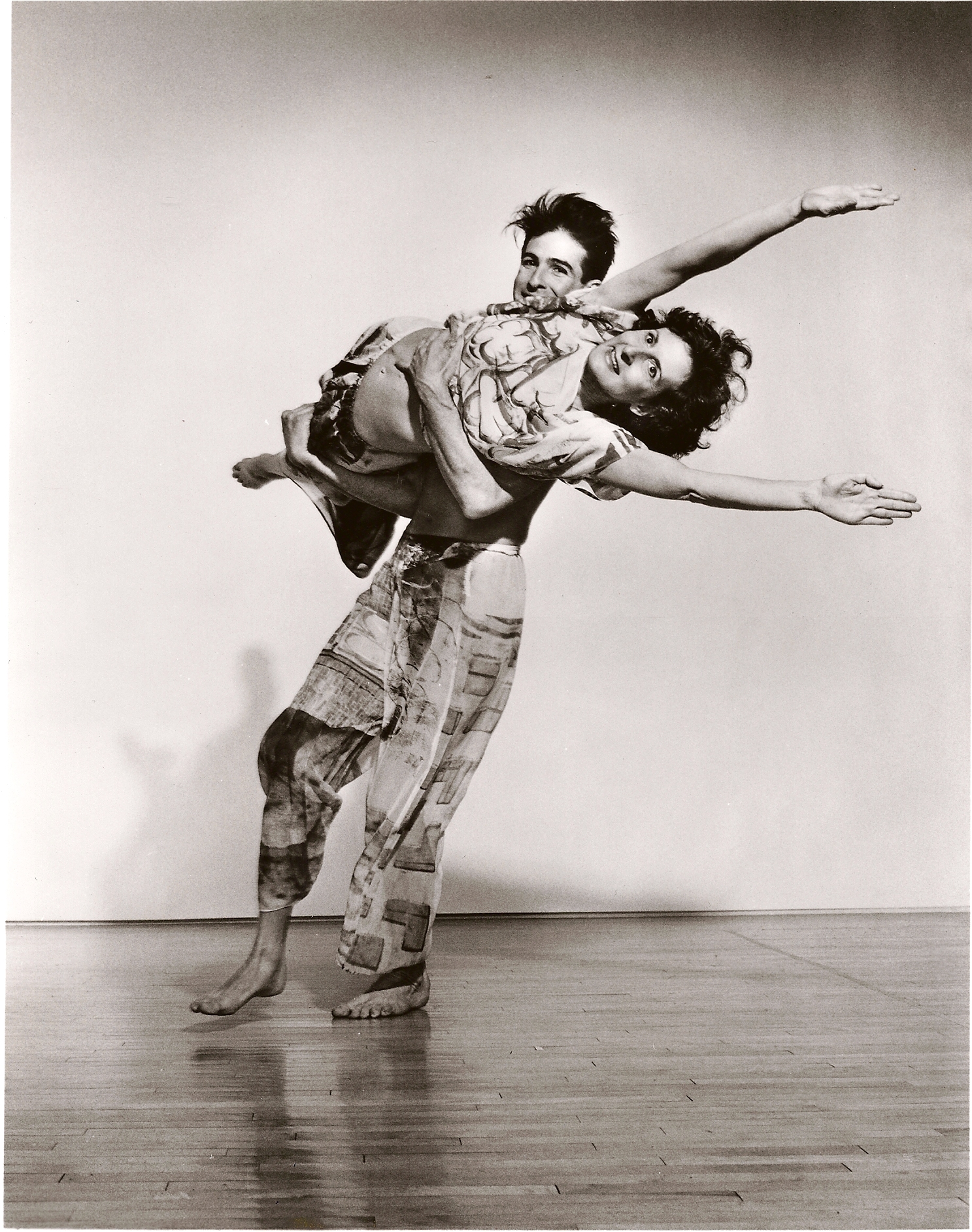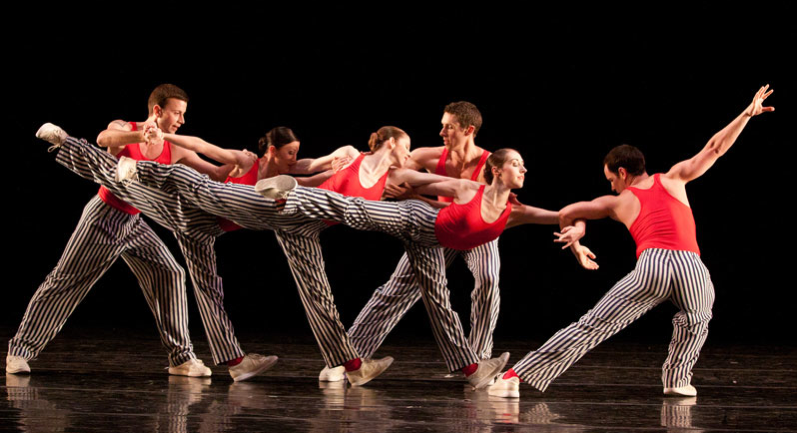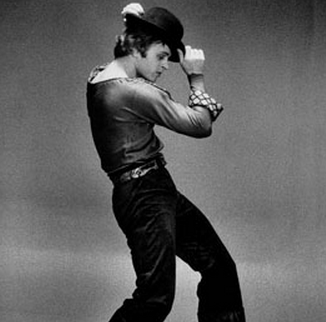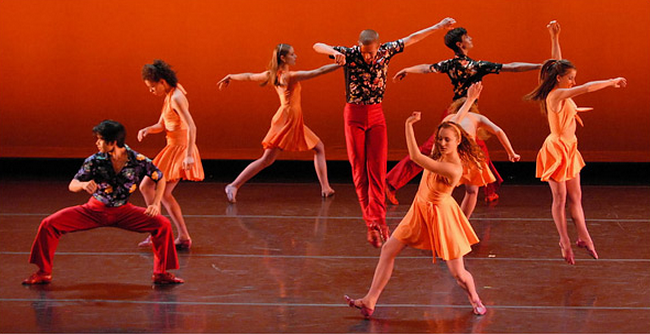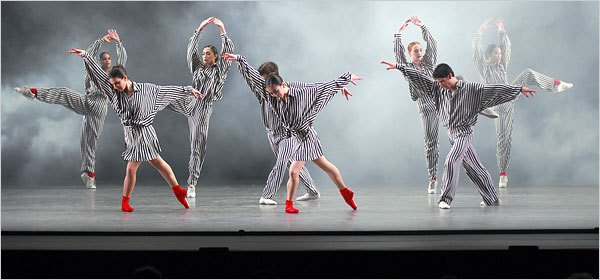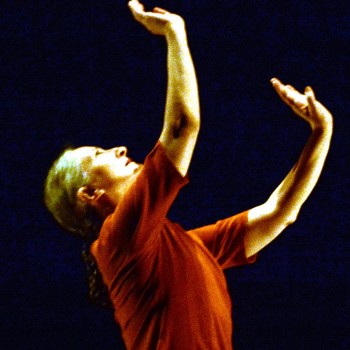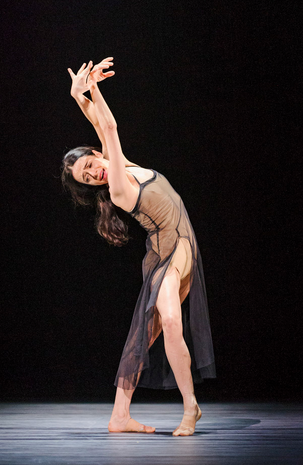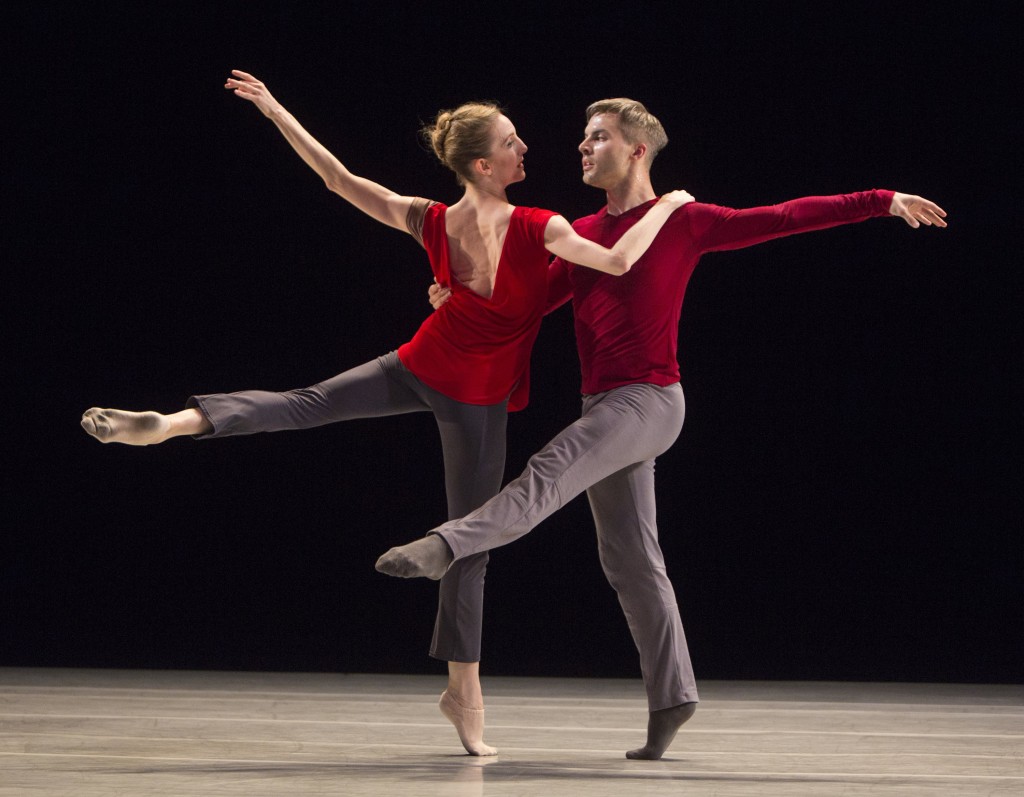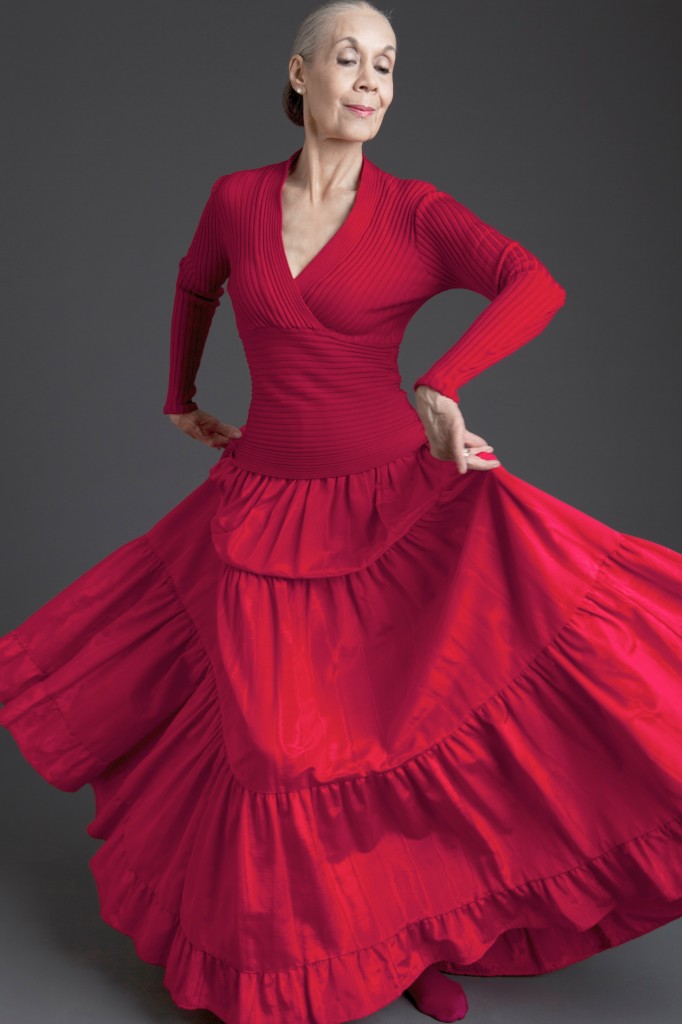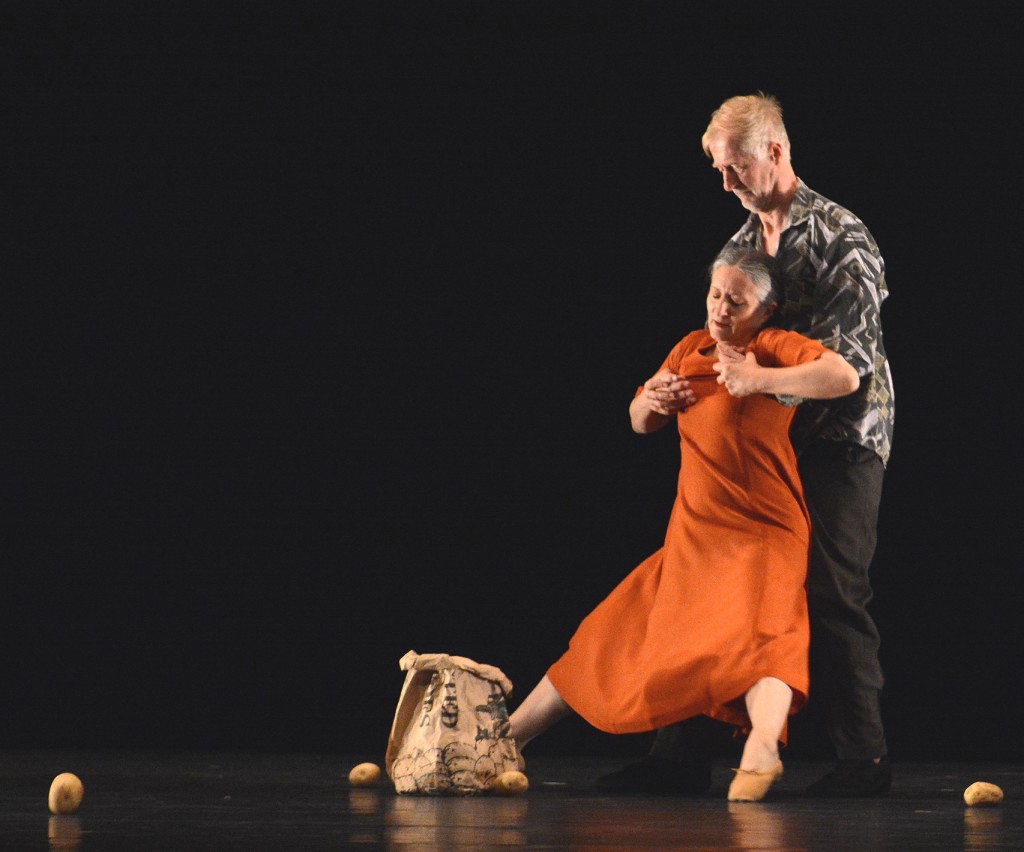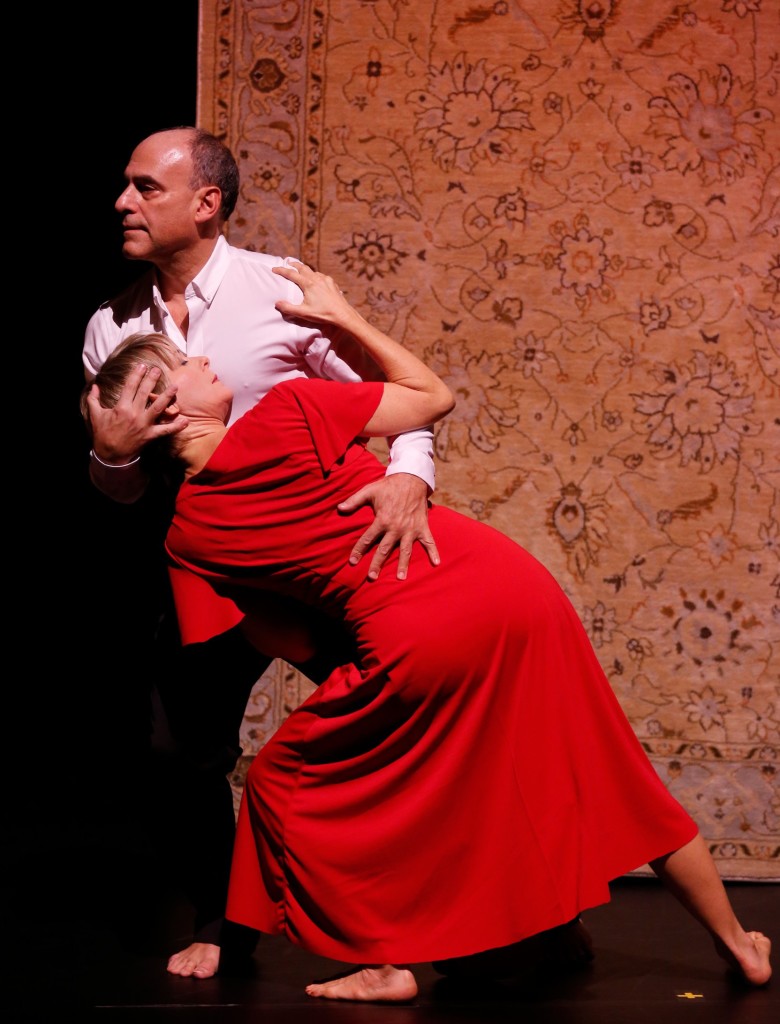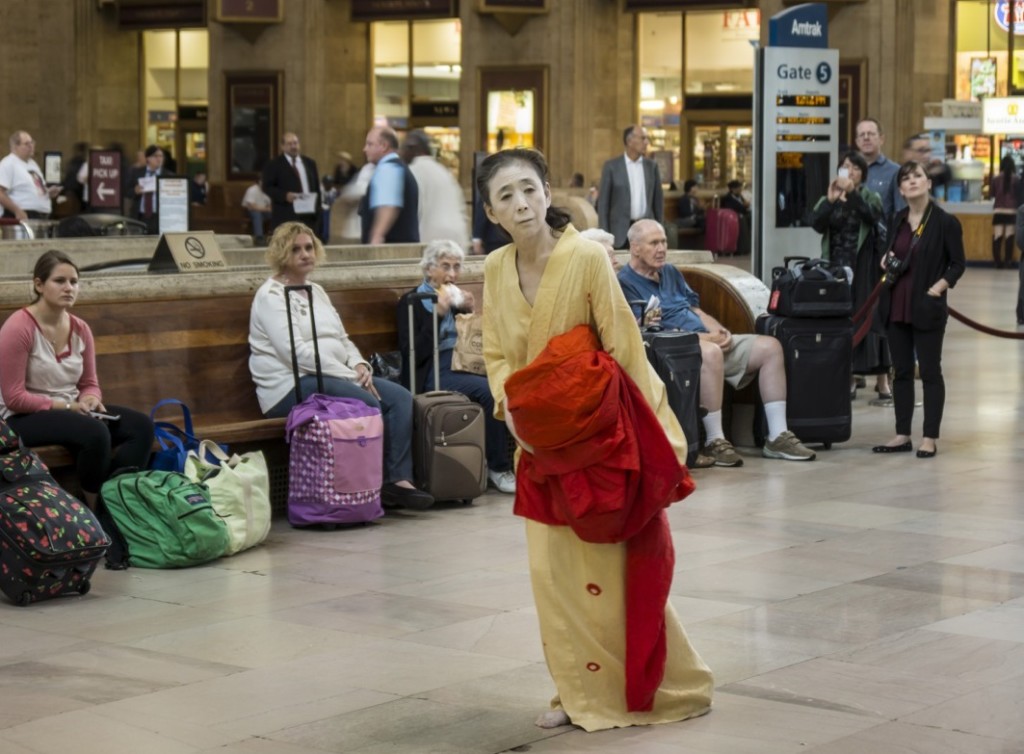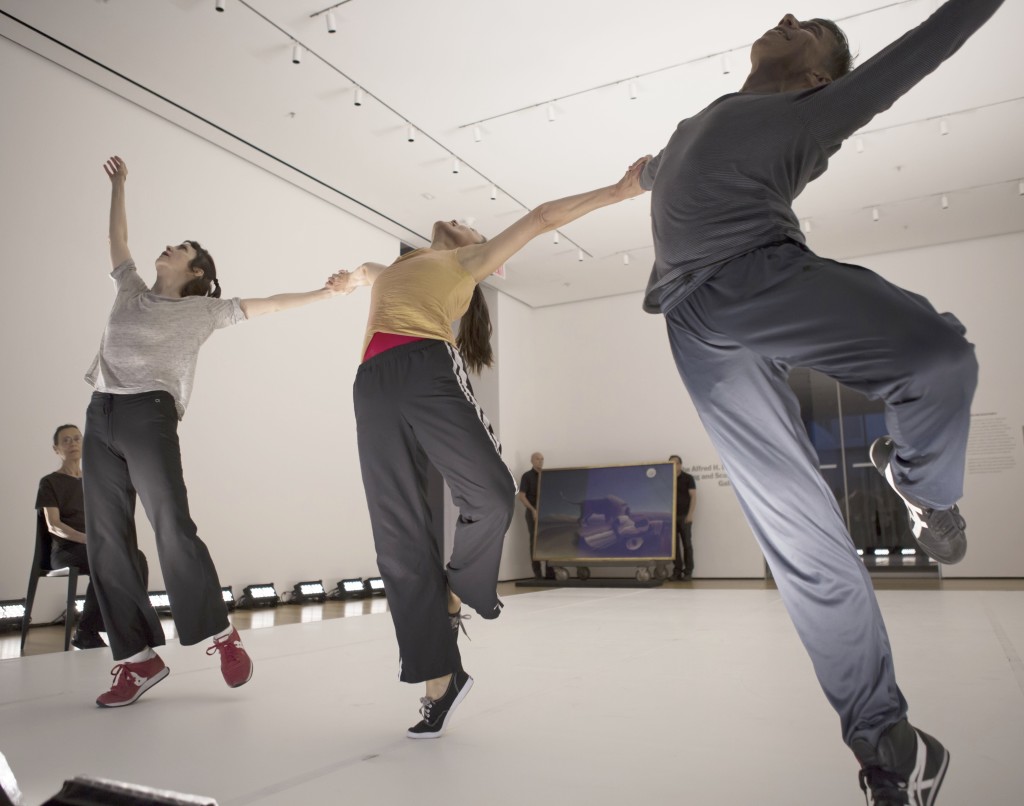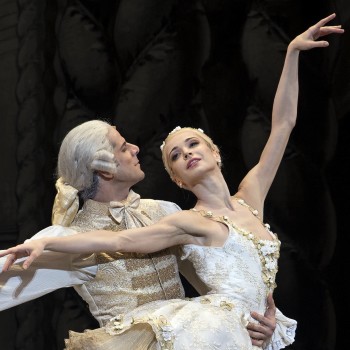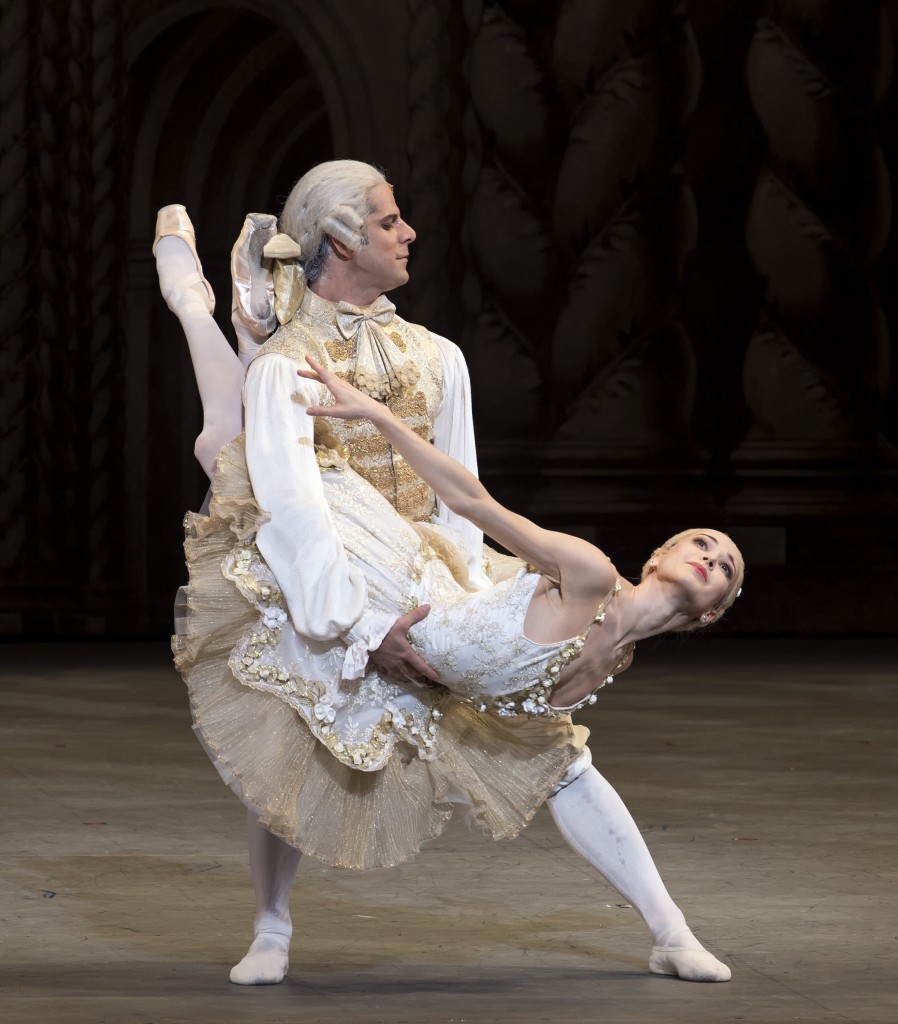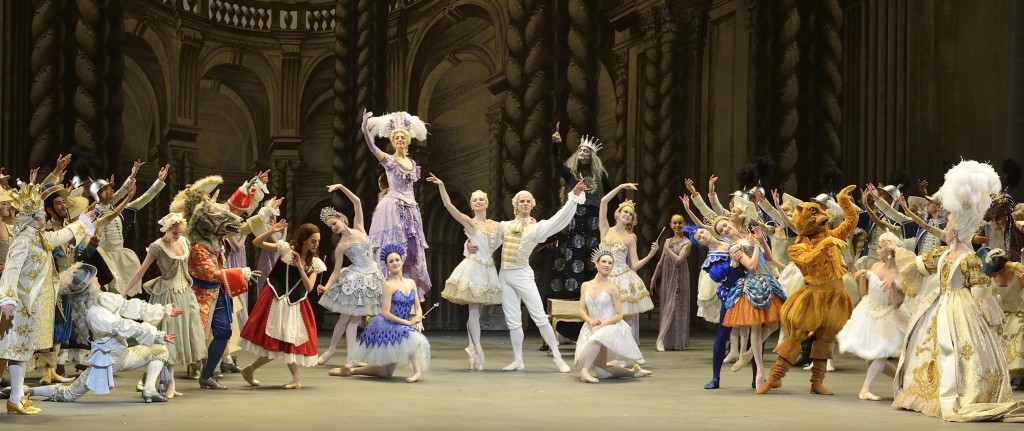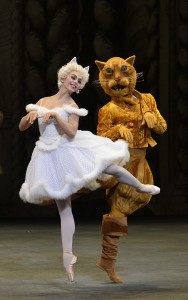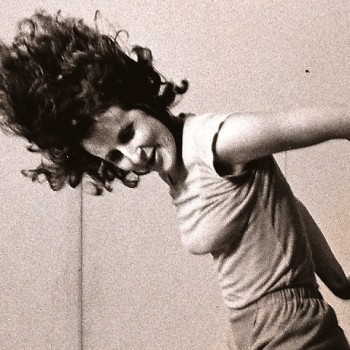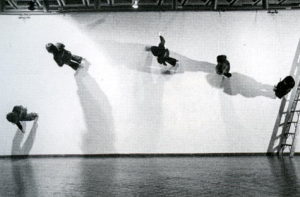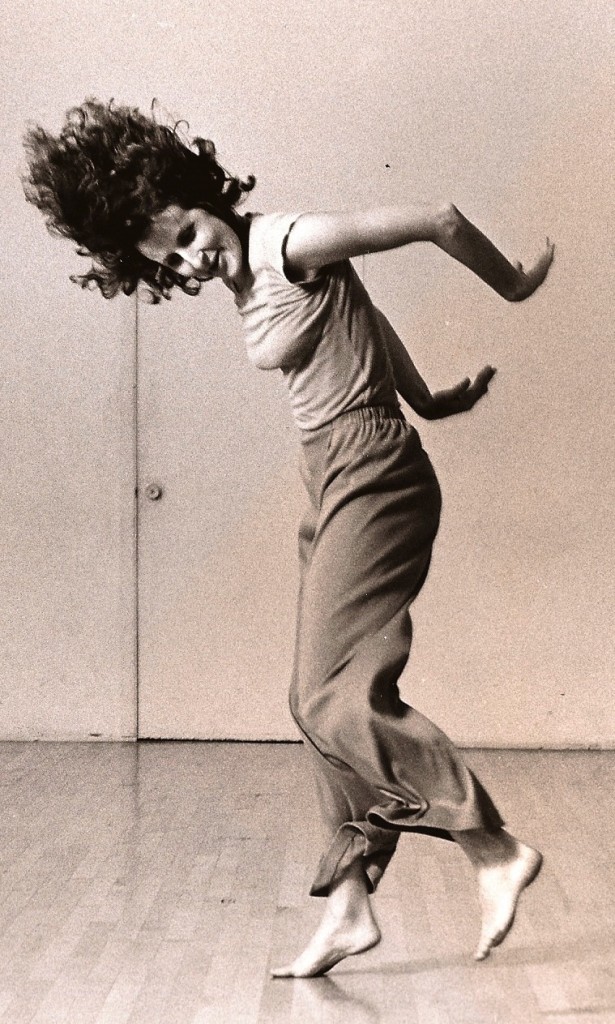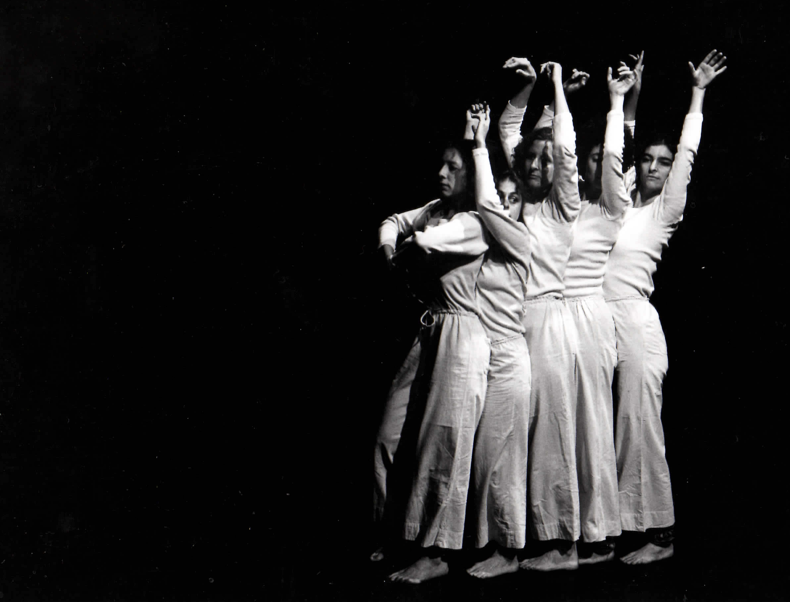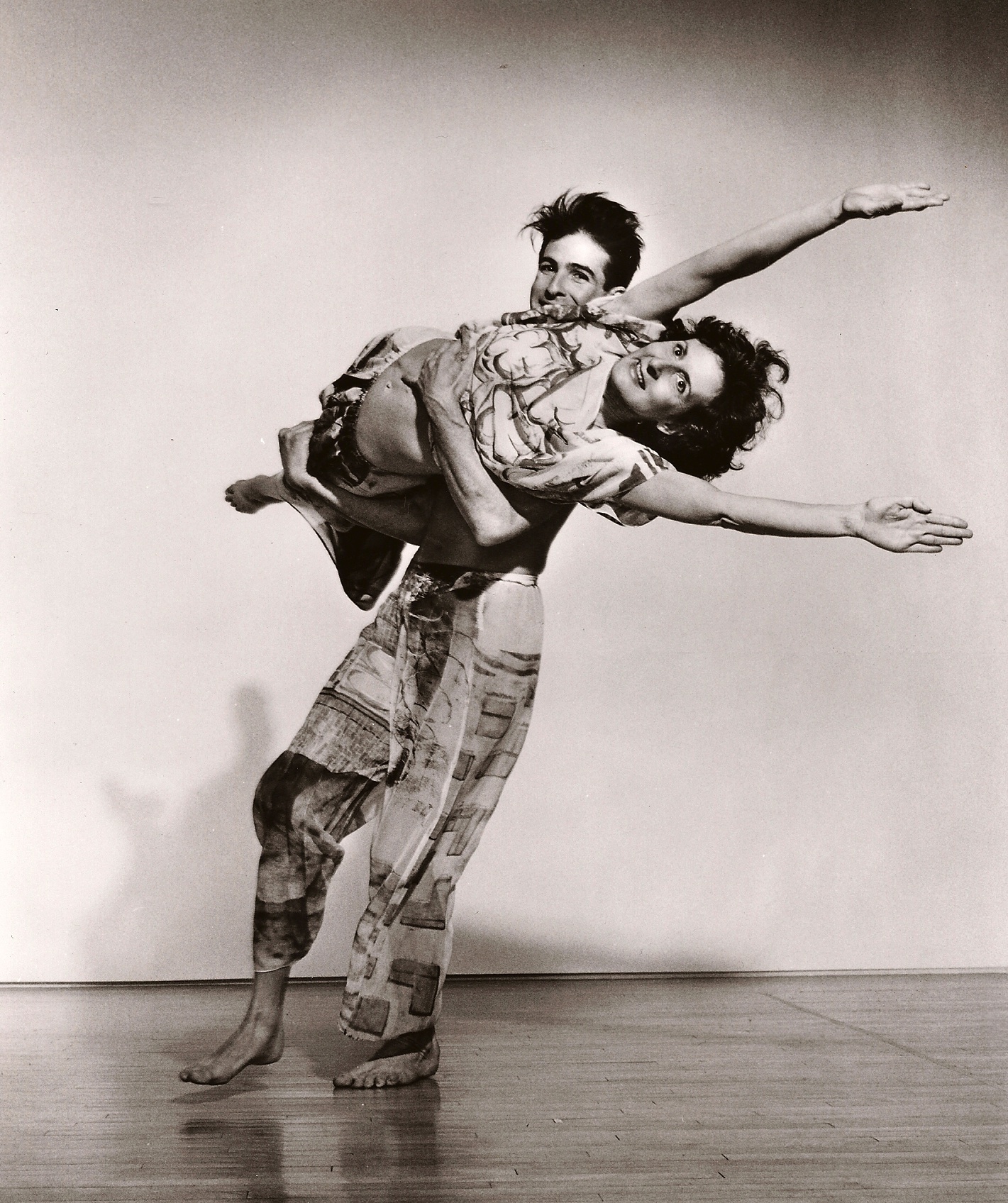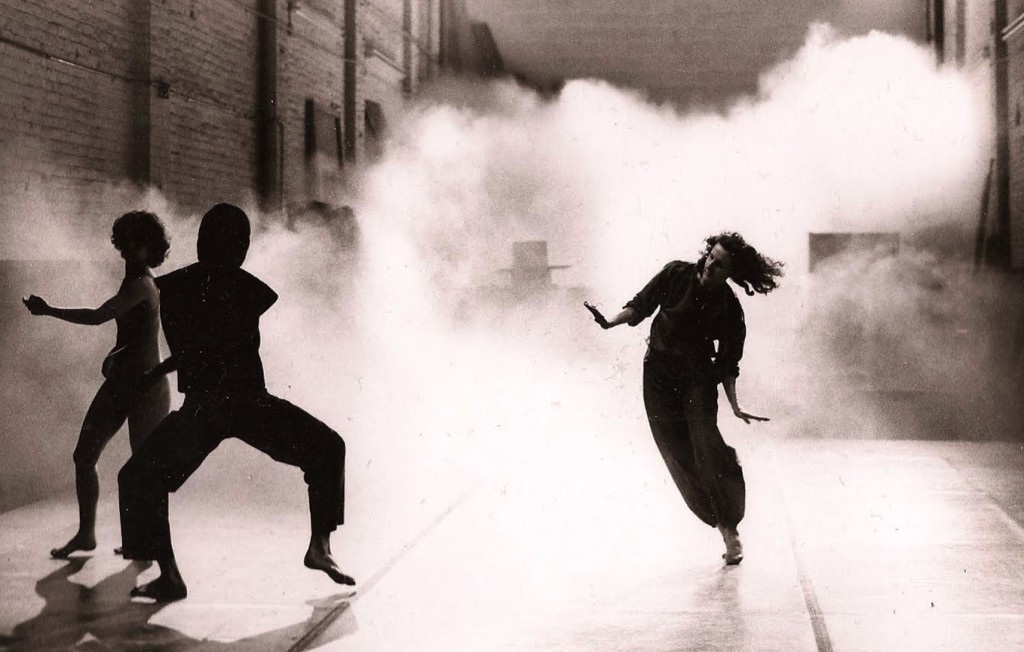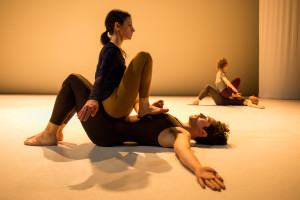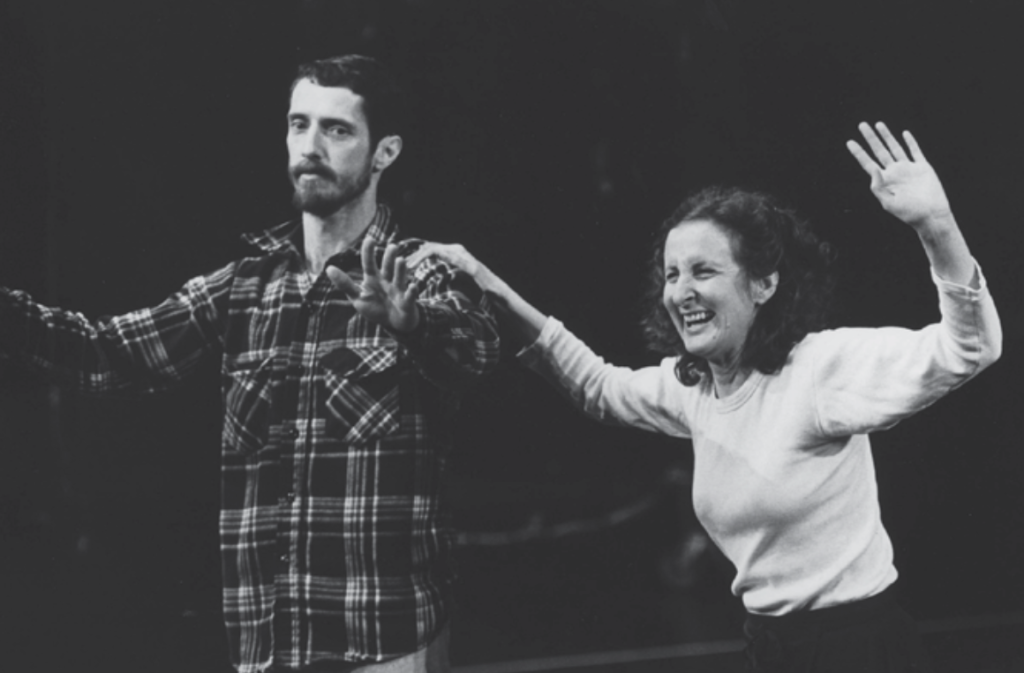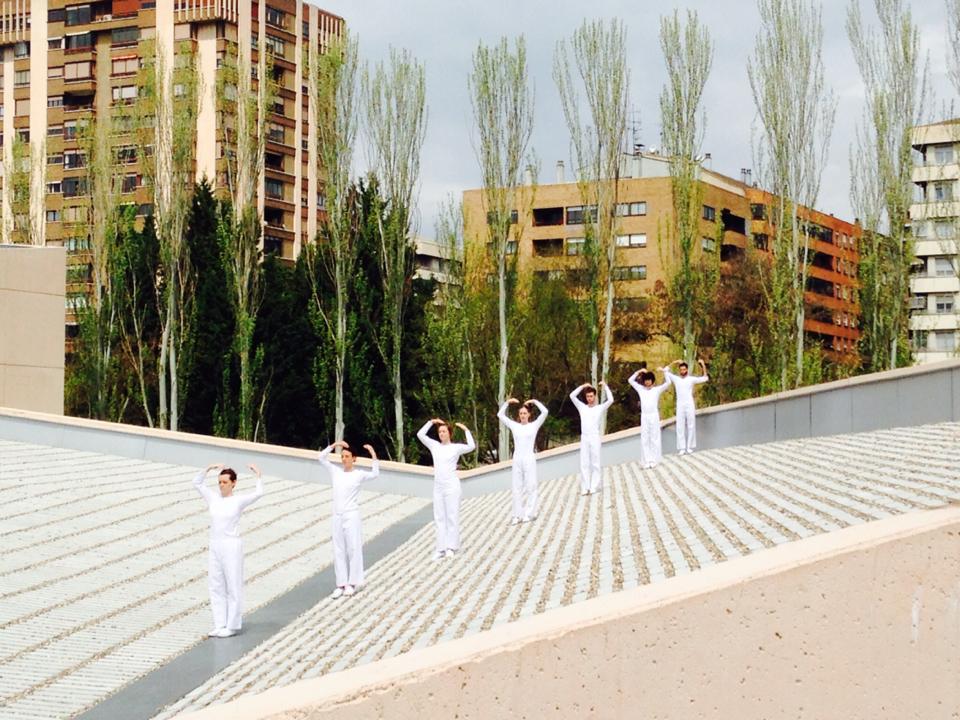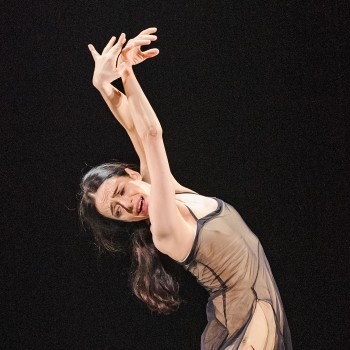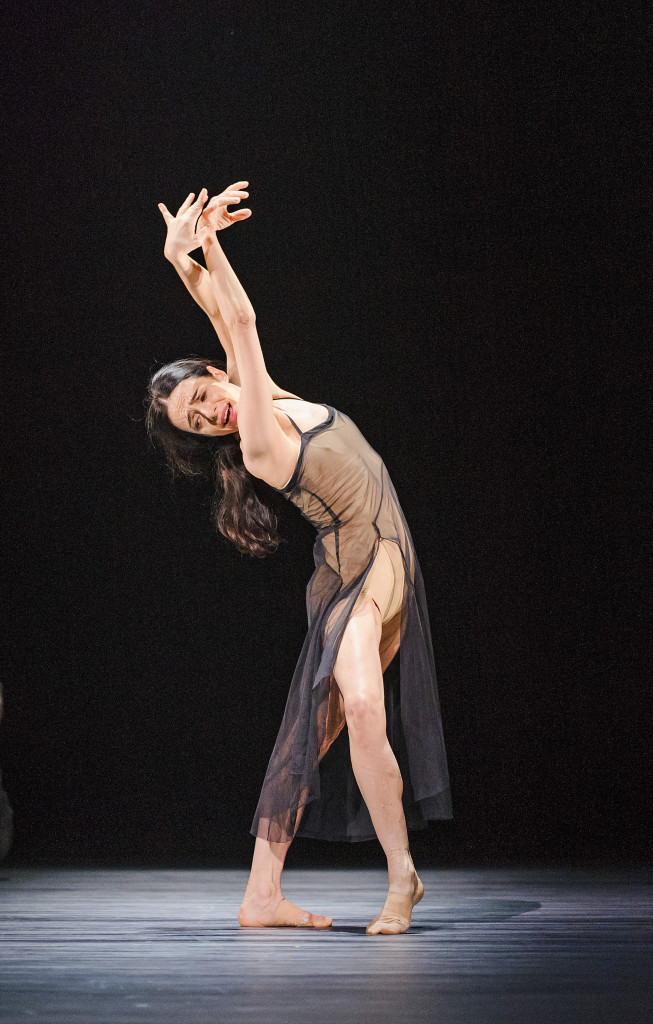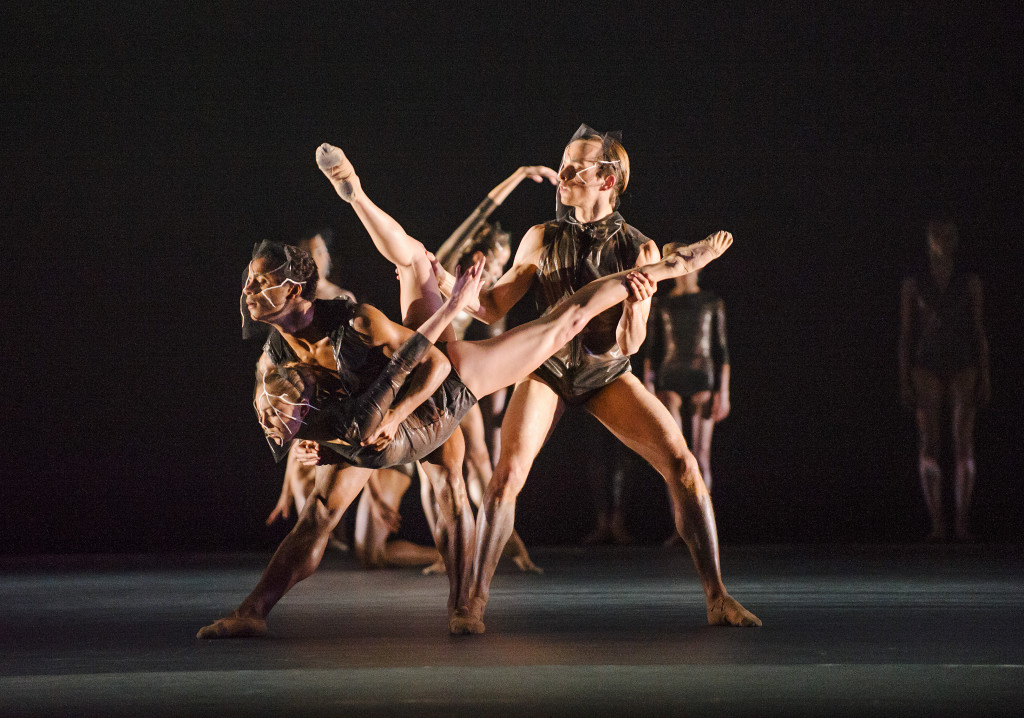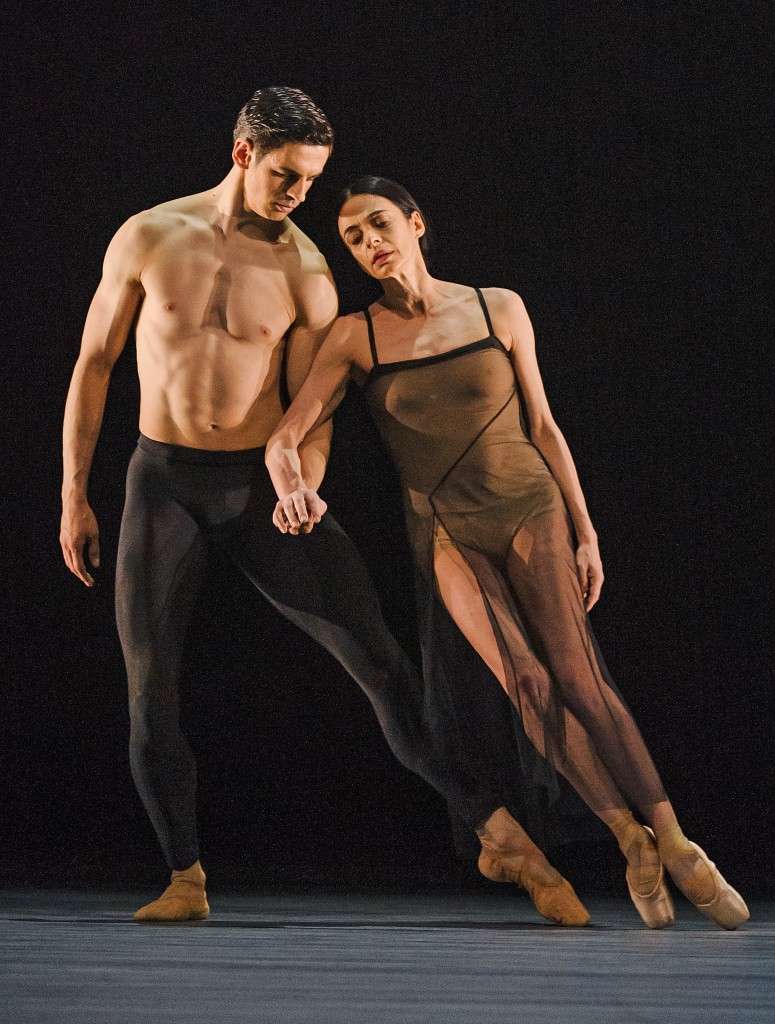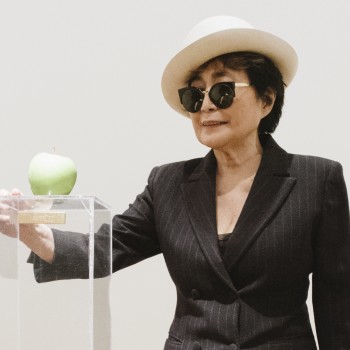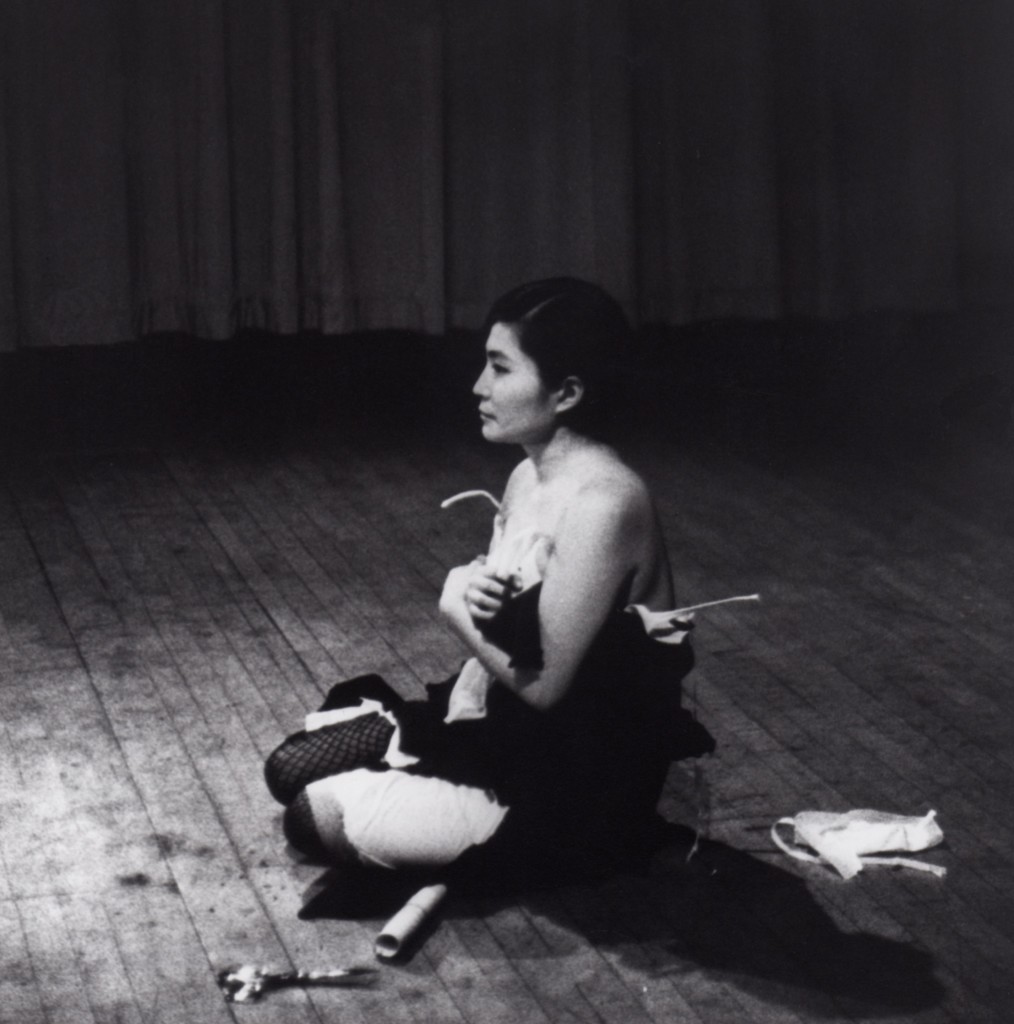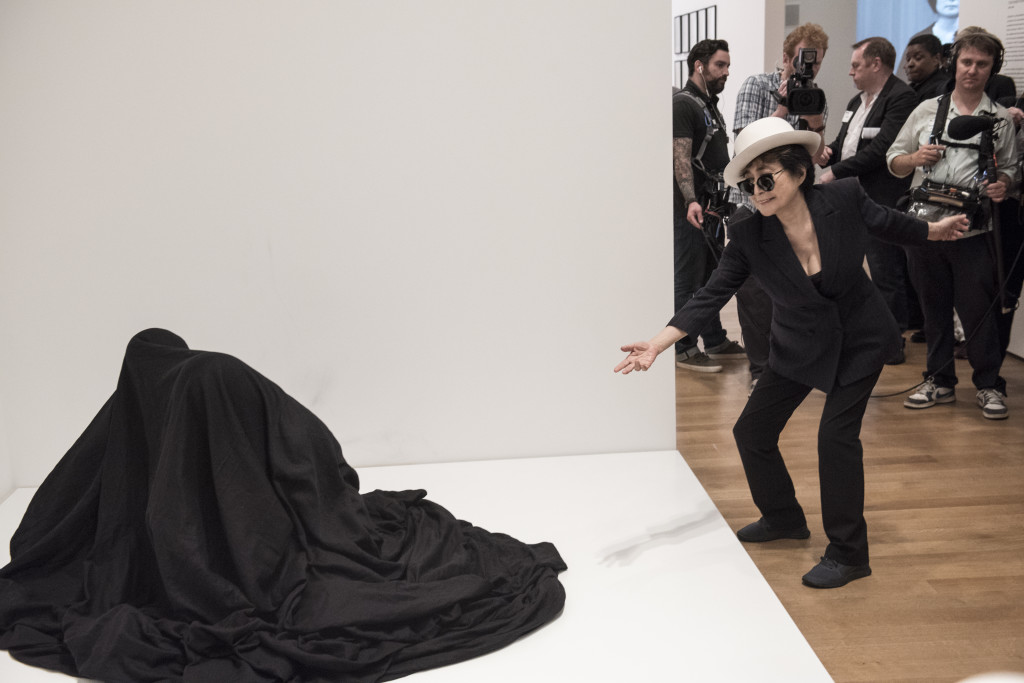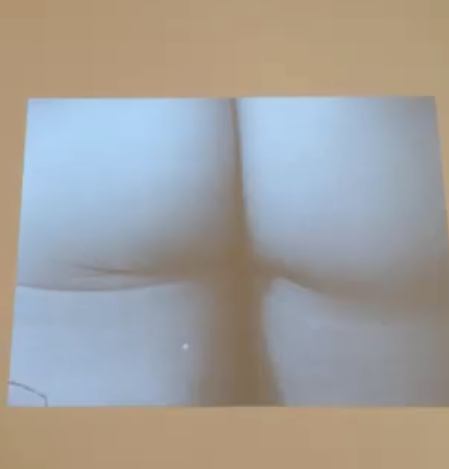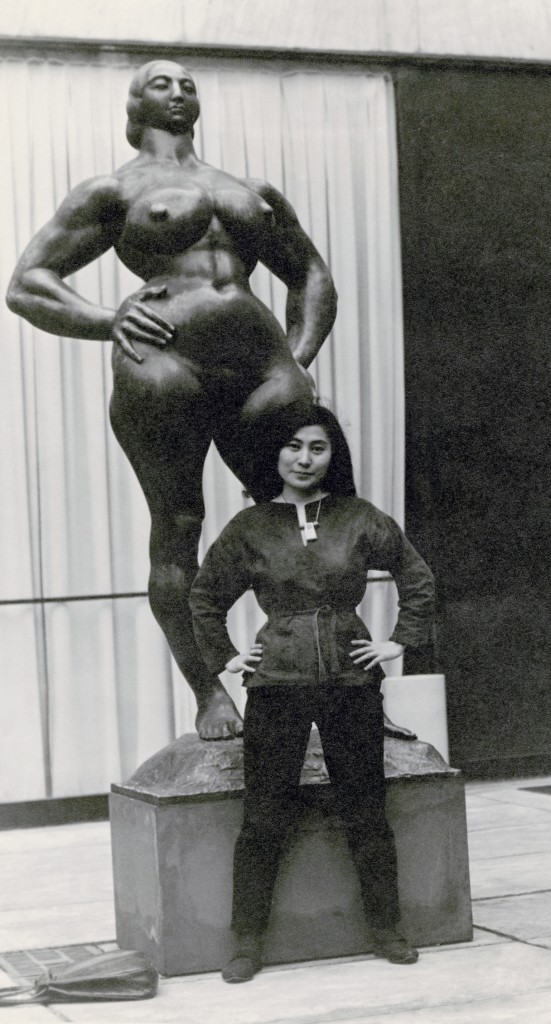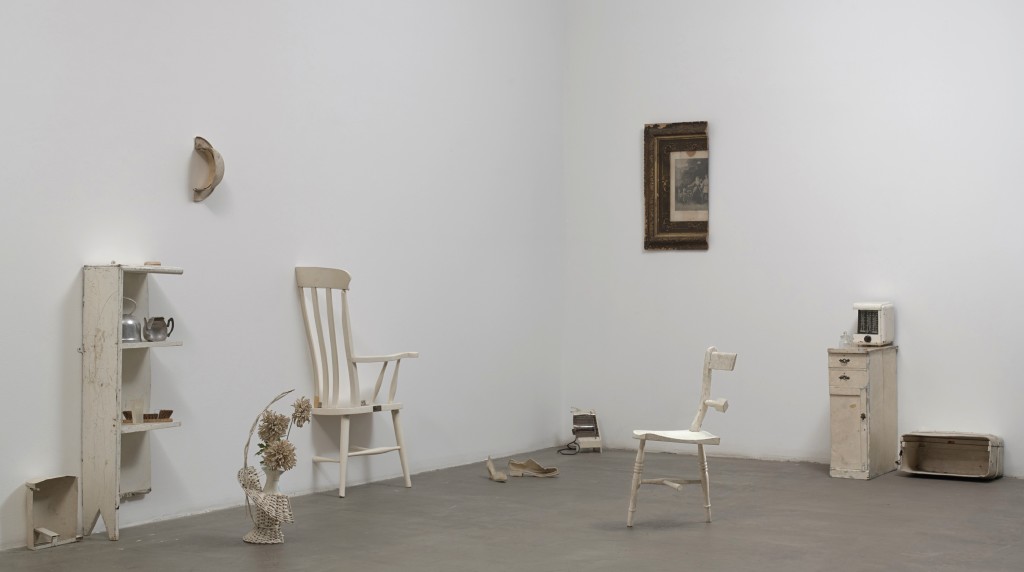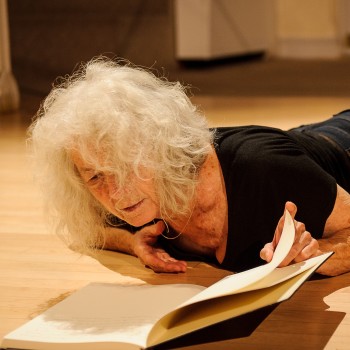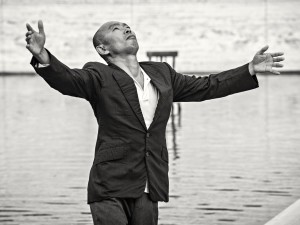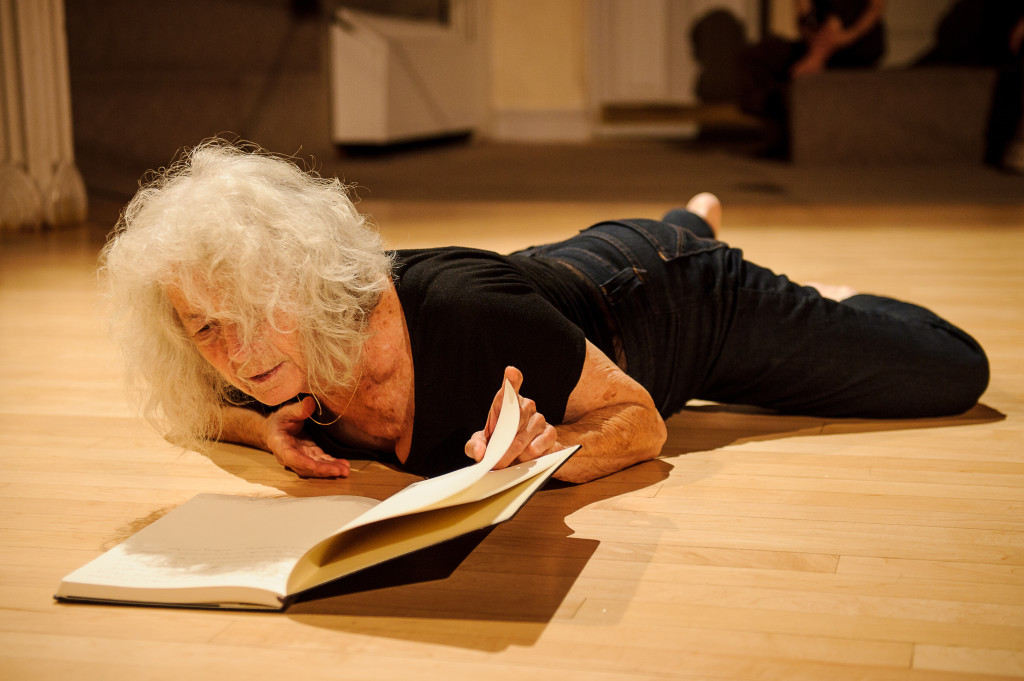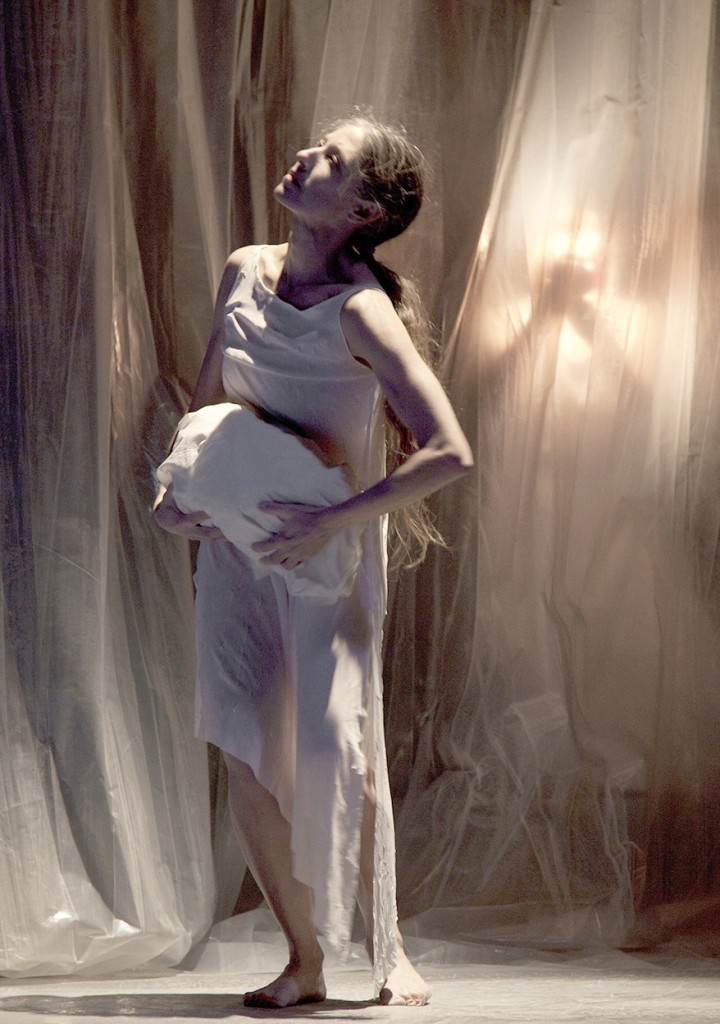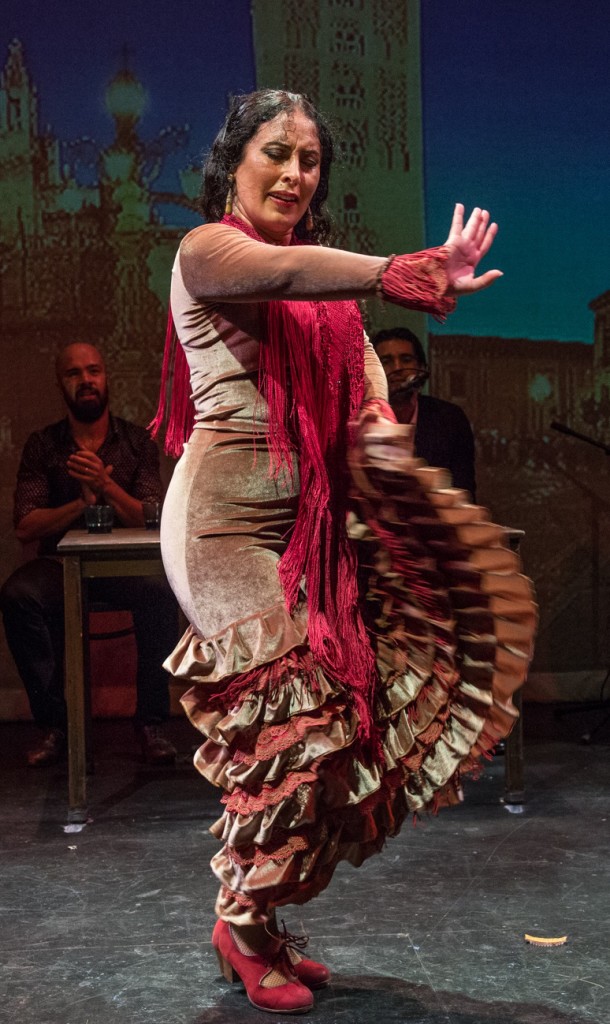
Sonia Olla at 14th St. Y, photo by Maite H. Mateo
For the real flamenco experience that you would get in the tablaos of Seville, you can’t beat Sonia Olla Flamenco Dance Company at the Theater at the 14th Street Y. I was sitting so close that when she started whipping her head around, her comb flung out and hit my leg. She’s a maestro of swirling shawl, jabbing heel work, and the alternation between stormy and calm. In that flamenco land where pride commingles with seduction, her fingers trace her torso upward and she flips her skirt in back as she swivels her hips.
Gypsy singer Ismael de la Rosa Fernández is a thrill to hear and watch. As he raps his knuckles on a table to get going, you feel he was born into flamenco. (He’s a member of the renowned La Familia Fernández.) Then he pours out his voice with passion and textures that change in a single breath. Under the table, his feet are rapping out the sharply syncopated rhythms. When, toward the end of the evening, he stands up as though to challenge Olla while fiercely loving her, the sparks between them fly. In this video snippet you can get a tiny glimpse of how the two ignite each other’s energy. And you can see why Madonna asked them to choreograph for her Rebel Heart tour.
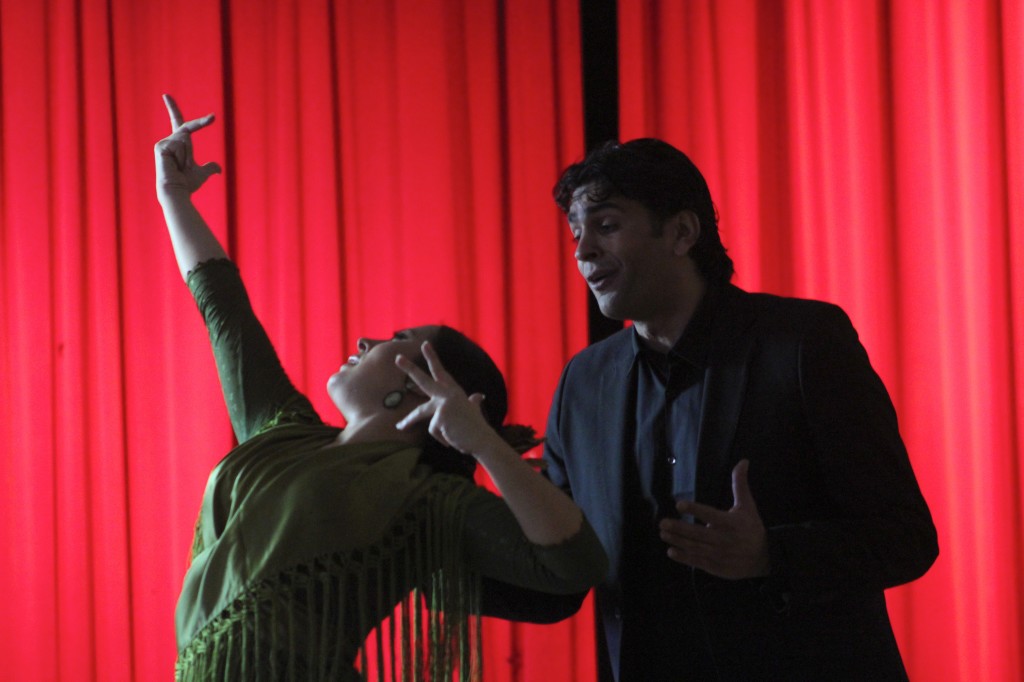
Olla and Fernández
Ángel Ruíz plays a classical flamenco guitar, sometimes making it sound as fluent as a harp. When, in the coda, he stands up and shyly joins in with the palmas (hand clapping), the audience cheers.
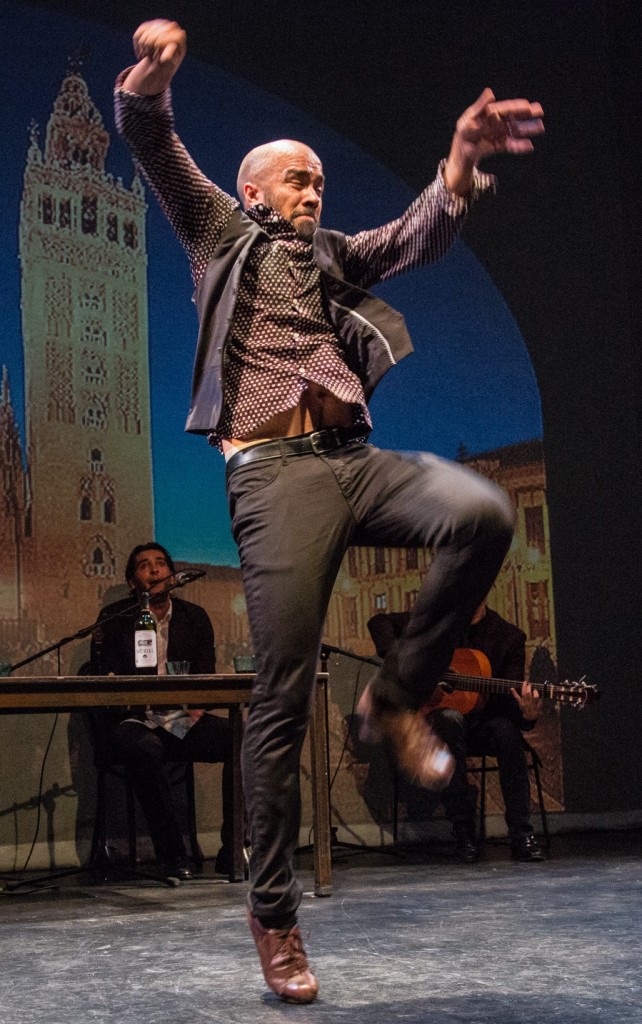
Nino de los Reyes, photo by Maite H. Mateo
The young Nino de los Reyes spices up the evening with a physical wildness in his solo Alegrias section. As though yanked here and there by invisible forces, he twists and turns, stomps and vibrates his heels. After a waterfall of clicking fingers, he might turn fiercely and then get pulled into an off-balance torque. His dancing is kinetically exciting—without the usual preening of male flamencos. It’s pure dance energy and so individual that he reminded me of the brilliant flamenco improviser Israel Galván.
Tablao Sevilla will only be repeated on Sunday at 3:00, September 13. My advice: Reserve a ticket at a table. Though it’s a bit more expensive, you’ll be close to the flying hair combs. (On September 11 and 12, the company performs Por Los Caminos, which I have not seen.) Olé to the 14th Street Y for presenting this terrific company.
To buy tickets click here.

Olla with Shawl, all photos courtesy Sonia Olla Flamenco Dance Company
